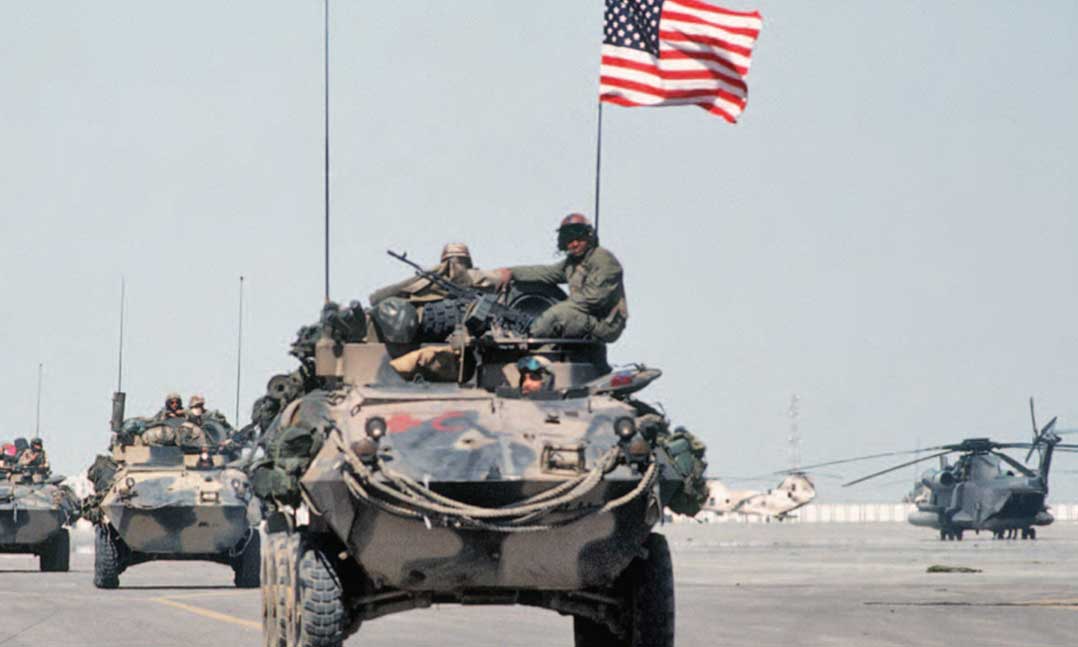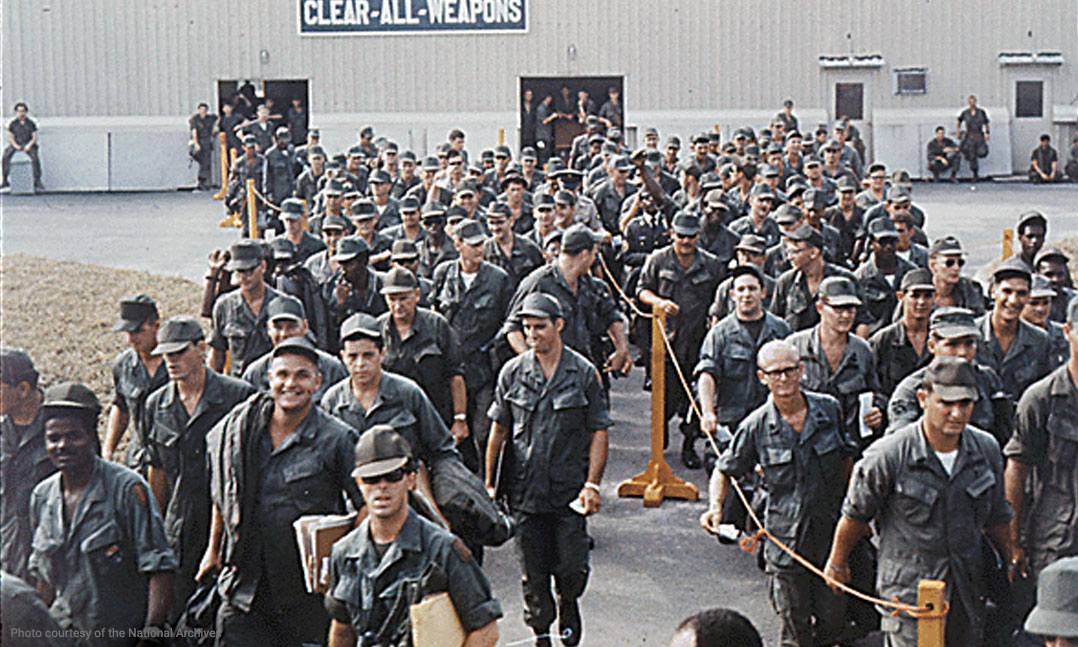With the passing of the PACT Act, as a veteran you may have a lot of questions. As we wait for VA to interpret the new law and how it will impact veterans, the below information has been gathered to help you navigate the path forward.
If you or a loved one experienced toxic exposure while serving in the military, we urge you to answer a few quick questions regarding your service and get referred to a VFW Accredited Service Officer. Please note that with the PACT Act, many predatory organizations have appeared and are charging exorbitant fees for their services. The VFW has never and will never charge for our services as it is our mission to ensure that every veteran receives the benefits they earned. Contact a VFW Accredited Service Officer today.
Gulf War Era Veterans
Vietnam Era Veterans
Radiation-Exposed Veterans
Camp Lejeune Contaminated Water

Gulf War Era Veterans
Under the PACT Act, veterans are entitled to VA health care and compensation benefits if they have qualifying service for VA to concede exposure to particulate matter and if they have manifested any of the specified diseases after their qualifying service.
Qualifying service for Gulf War era veterans means you either:
- Performed active military service in any of the following countries during or after the Gulf War (Aug. 2, 1990): Bahrain, Iraq, Kuwait, Oman, Qatar, Saudi Arabia, Somalia or the United Arab Emirates. Or;
- Performed active military service in any of the following countries after the start of the Global War on Terrorism (Sept. 11, 2001): Afghanistan, Bahrain, Djibouti, Egypt, Iraq, Jordan, Kuwait, Lebanon, Oman, Qatar, Saudi Arabia, Somalia, Syria, United Arab Emirates, Uzbekistan or Yemen.
The following cancers and diseases are now presumptive of Gulf War qualifying service:
Brain cancer; gastrointestinal cancer; giloblastoma; head cancer of any type; kidney cancer; lymphatic cancer; lymphoma; melanoma; neck cancer; pancreatic cancer; reproductive cancer of any type; respiratory cancer; asthma; chronic bronchitis; chronic obstructive pulmonary disease (COPD); rhinitis; sinusitis; constrictive bronchiolitis or obliterative bronchiolitis; emphysema; granulomatous disease; interstitial lung disease (ILD); pleuritis; pulmonary fibrosis and sarcoidosis.
*VA may also assign benefits when the veteran exhibits objective indications of a medically unexplained chronic multisymptom illness that is defined by a cluster of signs or symptoms, such as chronic fatigue, fibromyalgia, and functional gastrointestinal disorders (e.g., irritable bowel syndrome, functional dyspepsia, functional vomiting, functional constipation, functional bloating, functional abdominal pain syndrome and functional dysphagia).

Vietnam Era Veterans
Under the PACT Act, veterans are entitled to VA health care and compensation benefits if they have covered service for VA to concede exposure to herbicides (e.g., Agent Orange) and if they have manifested any of the specified diseases after their qualifying service.
Covered service for Vietnam era veterans means active service in:
- The Republic of Vietnam from Jan. 9, 1962, to May 7, 1975.
- Thailand at any U.S. or Royal Thai Base from Jan. 9, 1962, to June 30, 1976.
- Laos from Dec. 14, 1965, to Sept. 30, 1969,
- Cambodia at Mimot, Krek, or the Kampong Cham Province from April 16, 1962, to April 30, 1969.
- Korean Demilitarized Zone (DMZ) from April 1, 1968, to Aug. 31, 1971.
- Guam, American Samoa or territorial waters thereof from Jan. 9, 1962, to July 31, 1980.
- Johnston Atoll or on a ship that called at Johnston Atoll from Jan. 1, 1972, to Sept. 30, 1977.
- Air Force or Air Force Reserve veterans who regularly and repeatedly operated, maintained, or served aboard a C-123 aircraft know to have been used for spraying herbicides.
PACT Act added specified diseases for Vietnam era veterans are:
- Hypertension
- Monoclonal Gammopathy of Undetermined Significance
*Access the full list of presumptive conditions related to herbicide (Agent Orange) exposure here.
Camp Lejeune Contaminated Water
For more than three decades, service members, military families, and civilians living and working at Camp Lejeune, North Carolina, were exposed to toxic drinking water which have been linked to life-long health effects. The below information has been gathered to assist exposed veterans and their families.
The PACT Act contained a section which has become known as the “Camp Lejeune Justice Act” (CLJA). For the first time in the history of the United States, the federal government uniformly waived immunity and liability against lawsuit for claims arising out of serious illnesses and conditions suffered by exposure to toxic water onboard Camp Lejeune in North Carolina.
If you've already met with a VFW-Accredited Service Officer and determined pursuing a Camp Lejeune lawsuit is right for you, contact a VFW-entrusted law firm today.